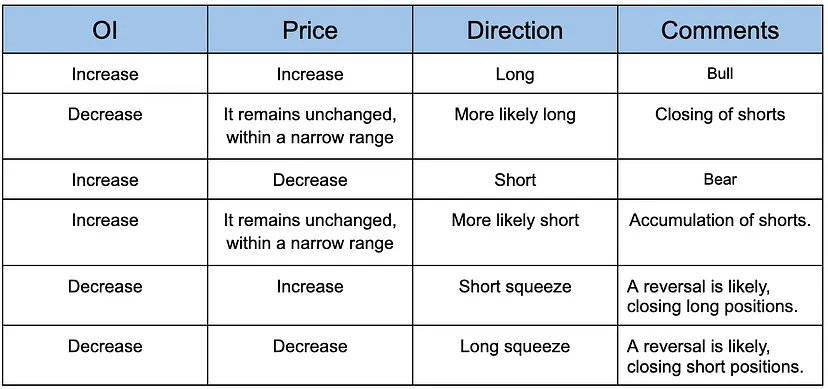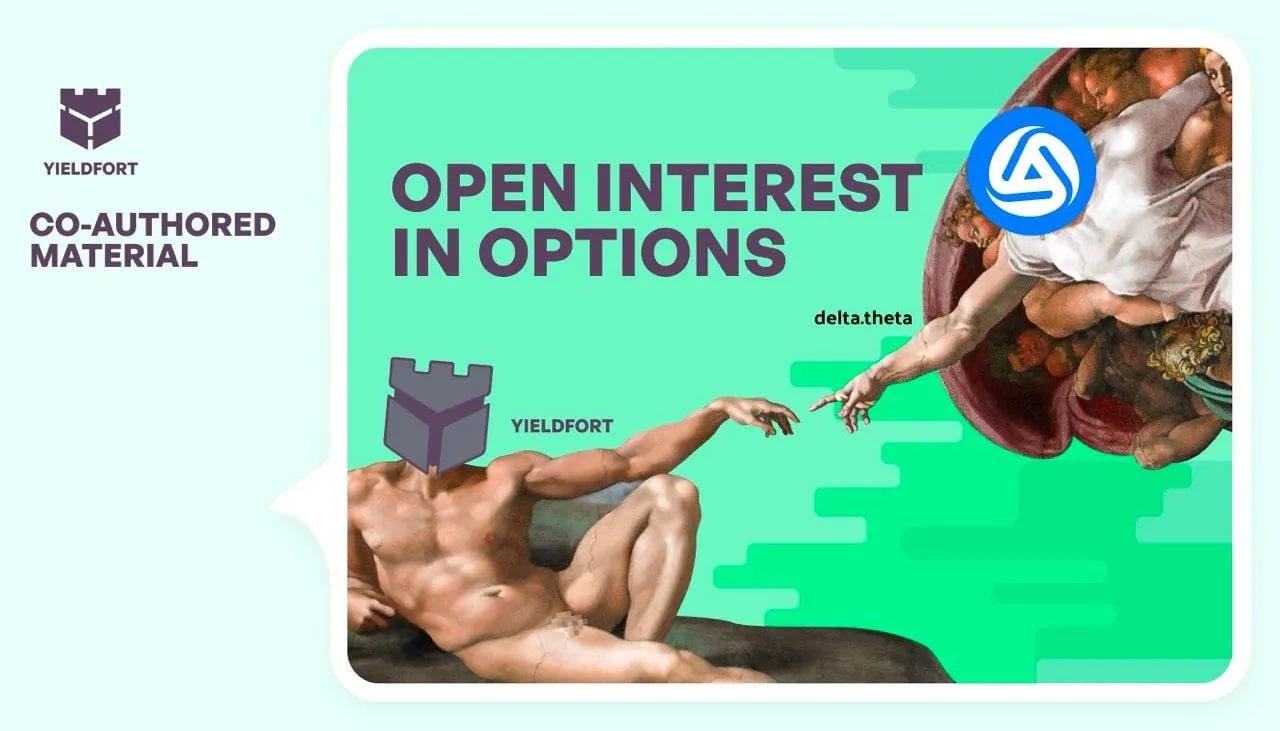When trading options, we typically encounter the terms OI, or open interest, and Volume, or trading volume. Let’s delve into what these indicators mean, what their dynamics might suggest, and where we can find sources for analysis.
OI, or open interest, indicates the number of contracts held in the market. Specifically, it shows the number of people “in a position”. Therefore, OI increases when new positions are opened and decreases when positions are closed. It’s also important to understand that OI grows when new participants enter, indicating an influx of liquidity.
Volume, on the other hand, generally refers to the amount traded. This includes all transactions (both opening and closing of positions).
Here’s how you can generally characterize OI and price movements:
- If OI is rising against the backdrop of price movement (up or down), it typically indicates a strong trend that is likely to continue.
- If OI is decreasing alongside price movement, it suggests the trend is ending.
- If the price remains unchanged but OI sharply increases, this could indicate a trend reversal.
Let’s take a closer look at how the OI of the underlying asset (futures) might correlate with the market, i.e., the movement of the price and the change in OI, and then consider its practical application to options.

For practical analysis, we will take Amberdata’s data for Bitcoin transactions over the past 3 days and the last 24 hours:
The past 3 days.

The last 24 hours.

Let’s also add our favorite gamma profile.

Judging by the gamma, the market isn’t really set to fall, but growth is limited by the strike of 31,000. OI increased in calls with a strike of 29,500 and slightly with 30,000. Considering that the 29,500 call will burn even more tomorrow, this could turn out to be a pretty good trade if expiration occurs at 30,000–30,400.
